North East
Swarajya Exclusive: China Incubates New Militant Outfit In Arunachal Pradesh To Thwart Mega Dam Projects In The State
Jaideep Mazumdar
Jan 04, 2025, 04:32 PM | Updated Feb 01, 2025, 02:35 PM IST
Save & read from anywhere!
Bookmark stories for easy access on any device or the Swarajya app.
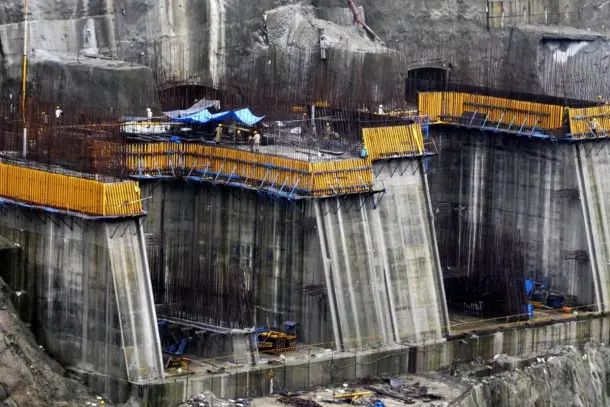
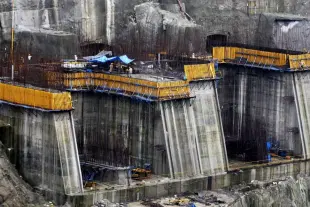
China has birthed a new militant outfit in Arunachal Pradesh called the United Tani Army (UTA) to thwart the construction of mega dams in the Himalayan state, especially on the Siang river that originates in Chinese-occupied Tibet (CoT).
Beijing’s intent is not only to derail India’s plans to generate over 57,000 megawatts of clean energy from multiple hydel projects in the state but also to deny India the safeguards it is trying to put in place against potential ‘water wars’ by China.
The UTA announced its presence on Christmas-eve (2024) by issuing a statement opposing the construction of mega dams, especially the Rs 1.13-lakh-crore Siang Upper Multipurpose Project (SUMP).
The statement, signifying the birth of another militant outfit in the region, has triggered shockwaves in security circles.
The SUMP is critical to counter the dangers posed to India by China’s mega hydroelectric and water storage projects on the Yarlung Tsangpo river.
The river originates near Mount Kailash in CoT and flows over 1,000 kilometres (km) eastward through the Tibetan plateau before taking a sharp U-turn at Namcha Barwa to enter Arunachal Pradesh as the Siang river.
The Siang then merges with the Dibang and Lohit rivers to become the Brahmaputra as it enters Assam.
Erection of mega dams on the Yarlung Tsangpo by China, especially its recently announced plans of constructing the world’s largest at the U-turn of the river (the Namcha Barwa horseshoe bend), will disrupt the normal flow of the river.
The Chinese mega project, set to cost over $137 billion, can lead to China starving India of water in the dry season to cause droughts and releasing huge volumes of water during the monsoons to cause floods.
The SUMP will be a bulwark against such ‘water wars’ by China.
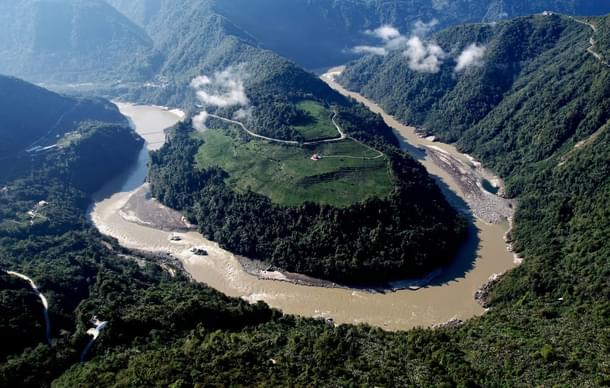
Germinating the New Militant Outfit
Arunachal Pradesh's Home Minister, Mama Natung, told Swarajya that the UTA is the reincarnation of the National Liberation Council of Taniland (NLCT), which was neutralised by the Arunachal Pradesh police by the end of 2010.
The NLCT was a small militant group with very weak links with the Khaplang-Yung Aung faction of the National Socialist Council of Nagaland, or the NSCN (K-YA). Its armoury consisted of a few country-made rifles and a couple of old pistols.
Formed in 2005, the NLCT has, even at its peak, consisted of a little over one dozen cadres. Its objective of carving out a separate nation for the Tani people did not enjoy any local support.
The Tani people comprise the Adi, Nyishi, Galo, Apatani, and Tagin tribes, who inhabit central and northern parts of Arunachal Pradesh and comprise a sizable section of the state’s population.
The NLCT was mostly engaged in extortions from businessmen and contractors, and carried out a few abductions as well.
But a few police operations against the outfit led to its decimation in November-December 2010. Its chairman, Anthony Doke, and most of the cadres were either arrested or they gave themselves up to the police.
Doke served time in prison, and after his release, he opened a restaurant in state capital Itanagar. The police kept him under watch for a few months. But since Doke was found to be leading a normal life and had integrated into mainstream society, the vigil on him was called off.
Beijing Tasks Naga Outfit to Contact Doke
Doke, it is now suspected, was approached a year ago by a couple of senior functionaries of the NSCN (K-YA), which has a presence in the Tirap, Changlang, and Longding districts of southeastern Arunachal Pradesh that borders Nagaland.
“The two NSCN (K-YA) functionaries who contacted Doke were emissaries of the top leadership of the Naga outfit. Their brief was to find out if Doke would be interested in floating another militant outfit,” a senior officer of the Intelligence Bureau (IB) told Swarajya.
Both the factions of the NSCN — the NSCN (K-YA) and the NSCN (Isak-Muivah) — retain strong links with China, which had in the past sheltered, provided training, and even arms to the Naga outfits.
The NSCN (K-YA) has almost its entire leadership and most of its cadres in camps in the northern Sagaing and western Kachin states of Myanmar.
Those areas are now under the control of the Kachin Independence Organisation (KIO), whose armed wing, the Kachin Independence Army (KIA), has captured large parts of the Kachin state from Myanmar’s ruling junta forces.
The KIO has very close links with China, which has been funding and even providing strategic and tactical advice to the KIA. KIO chairman General N’Ban La had travelled to China in early December for talks on the ethnic conflict in Myanmar.
The IB believes that it was at Beijing’s behest that the KIO asked the NSCN (K-YA) leadership to reach out to Doke to launch a new militant outfit.
Doke, it is learnt, was initially hesitant because of his bitter experience with his earlier outfit, the NLCT. He knew very well that without resources, arms, and external help, it would be impossible to sustain an outfit and make it matter.
The NSCN (K-YA) functionaries who met Doke assured him that funds, arms, and safe shelters would not be an issue this time.
Doke, according to a senior state intelligence officer, was told that all he had to do was recruit people. Funds, training, arms, and safe shelters would be arranged, he was promised.
Two more NSCN (K-YA) operatives were reportedly detailed to help him float the new outfit and start recruiting cadres.
The New Outfit is Formed
Doke is said to have taken the plunge sometime in February last year. The NSCN (K-YA) did the handholding and guided him through the process of identifying potential recruits, approaching them discreetly, working on them and brainwashing them, and ultimately recruiting them.
The functionaries of the Naga militant outfit who mentored Doke also oversaw the transfer of sizable sums of money through hawala channels to him.
Doke was able to recruit about eight young men from Itanagar and surrounding areas after about four months. The raw recruits, all semi-literate or school dropouts hailing from poor families, were put up in two separate houses on the outskirts of Itanagar and given a monthly stipend.
The first batch of eight recruits were then indoctrinated over the next couple of months and tasked with drawing in more recruits.
By early October last year, Doke was ready with about 20 young men to go underground. All of them journeyed to Longding district, from where they crossed the unfenced Indo-Myanmar border and slipped into Kachin. Doke met the NSCN (K-YA) leadership at a camp in Kachin.
This camp, believed to be located at Changrang Hi, has become the temporary headquarters of the UTA, which was formally raised with the 20 men and Doke as its chief.
A few NSCN (K-YA) functionaries are currently training the UTA cadres. China is believed to have promised to supply a good number of arms, including assault rifles and grenade launchers, besides ammunition, to the UTA through the KIA and the NSCN (K-YA).
UTA Announces Itself
A few days ago, UTA chief Doke circulated a short video of what he claimed was a UTA camp (watch this).
The video shows a moderately sized militant camp located inside a sparse forest. Nearly two dozen rifles, all of them Chinese-made, can be seen in the video. Some cadres dressed in camouflage-patterned outfits can be seen in the camp, which has a few makeshift structures.

But army and intelligence officers who saw the video and analysed it told Swarajya that the camp shown in the video belongs to the NSCN (K-YA), where the UTA recruits may be staying temporarily.
“At best, one or two of the makeshift structures in the camp house the UTA cadres. It is a well-established camp that would have been set up a couple of years ago at least. Also, the UTA does not possess so many sophisticated weapons that can be seen in the video,” said a senior army officer at the Army’s 2 Mountain Division, based in Upper Assam’s Dibrugarh.
“The video has been circulated to generate publicity for the UTA and project itself as a powerful and well-equipped militant outfit. The purpose is to attract fresh recruits and also collect funds through extortions,” said the IB officer.
UTA Threat Should be Taken Seriously
The threat posed by the UTA should not be dismissed offhand. Senior journalist and commentator Bengia Ajum, who writes for The Arunachal Times, says the UTA will try to leverage public disaffection over the SUMP to lure disgruntled youth.
“The UTA announced its formation at a time protests had started over deployment of the central armed police forces (CAPFs) and state armed police to provide security cover to officials of the National Hydroelectric Power Corporation (NHPC), who are carrying out the pre-feasibility study for the SUMP. People of Upper Siang, Siang, and East Siang districts, who will be affected by the project, are unhappy. The UTA can tap into their anger and gain recruits and local support,” warns Ajum.
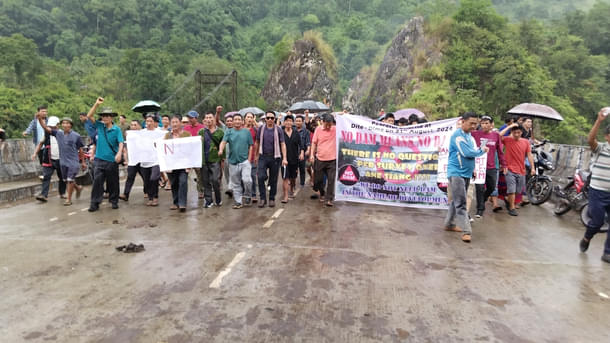
The UTA, while opposing construction of mega dams in the state, has also extended its support to another emotive issue that’s agitating many in the state: granting the Scheduled Tribe (ST) status to children of tribal women who have married non-tribal men.
Many say offspring from such mixed marriages should not get ST status and the benefits that accrue from that classification.
State Deputy Chief Minister Chowna Mein says that while the NLCT did not create any impact, the threat potential of the UTA should not be dismissed.
“In this age of social media, where grievances and narratives get amplified very fast, and when people can be easily misguided, the UTA can pose a grave threat. But the government is aware of that and is taking adequate measures,” he said.
China’s Game Plan
China’s proposed mega dam at Namcha Barwa is a ticking time bomb for India.
According to a study carried out by the Manohar Parrikar Institute of Defence Studies and Analyses, the dams (including the one at Namcha Barwa) being built by the Chinese on the Yarlung Tsangpo are large enough to be used as storage dams. Hence, China can use these dams for both irrigation and flood control.
That will deprive India, a lower riparian state, of water during the dry season. And during the monsoons, China can release excess water and thereby cause floods and devastation in Arunachal Pradesh and Assam.
This has happened in the past; release of excess water from dams built by China on rivers in the Tibetan plateau have caused devastating flash floods in Himachal Pradesh and Arunachal Pradesh.
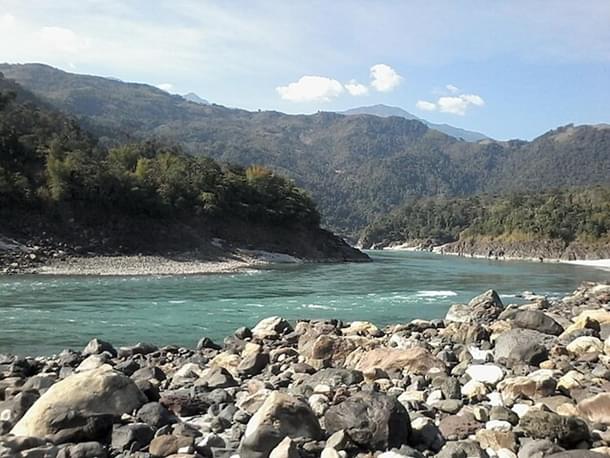
The SUMP, which envisages building a large storage dam on the Siang, will be India’s insurance against China weaponising the waters of the Yarlung Tsangpo. If China reduces the flow of water on the Yarlung Tsangpo, water can be released from the SUMP reservoir to maintain adequate flow of water down the Siang and also the Brahmaputra.
Similarly, if China releases excess water, the SUMP reservoir can hold the excess water and prevent floods downstream in both Arunachal Pradesh and Assam.
Apart from the proposed mega dam at Namcha Barwa, China has completed the construction of the Zangmu Dam (510 megawatt capacity) in the upper reaches of the Yarlung Tsangpo in 2010. Three more dams at Jiexu, Jiacha, and Dagu are currently under construction.
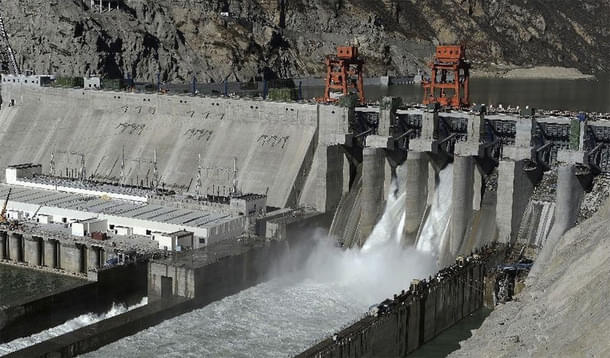
Though China proclaims that all these are run-of-the-river projects that will not affect the flow of water of the Yarlung Tsangpo, there is more than enough reason for India to disbelieve Beijing’s claims.
Senior politician Ninong Ering, who was Union minister of state for minority affairs in the second United Progressive Alliance (UPA II) government and is now the Bharatiya Janata Party (BJP) Member of the Legislative Assembly (MLA) from Pasighat West Assembly seat in East Siang district, says China can never be trusted.
“You just cannot know what they (China) will do to harm India. We must take adequate safeguards against water wars that China can very well unleash on us,” Ering said.
It is precisely these safeguards, like the SUMP, that China wants to derail. Intelligence agencies believe that China has spawned the UTA in order to whip up opposition to the SUMP and other mega dams in the state that shares long borders with CoT and also Myanmar.
China has also, through covert means, encouraged and sustained opposition by various groups in Arunachal Pradesh and Assam to mega dams in Arunachal Pradesh.
Many environmentalists and citizens groups that have been opposing and agitating against these mega dams in Arunachal Pradesh are suspected to have received support, including financial support, from entities linked to China.
China’s intent is to weaponise the Yarlung Tsangpo that flows into India from the Tibetan plateau. But the proposed mega dams in Arunachal Pradesh blunts that weapon and defeats Beijing’s sinister objective.
Hence, China is whipping up opposition by citizens’ groups against the mega dams in Arunachal Pradesh.
And, to be doubly sure, Beijing has propped up a new militant outfit to oppose the SUMP and other mega dams.




